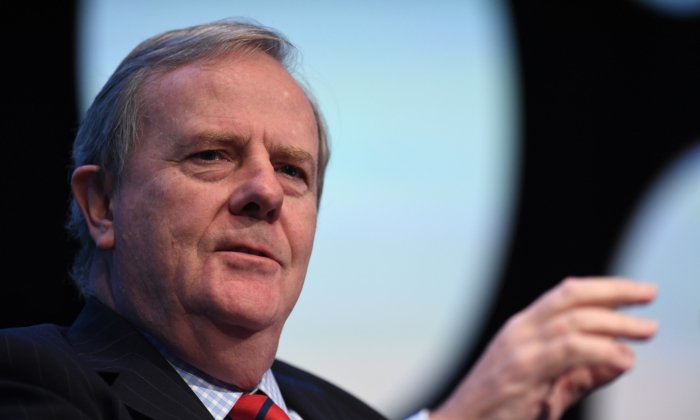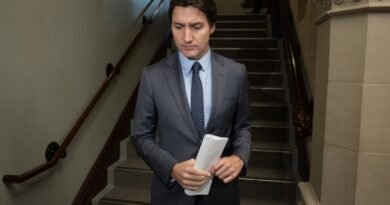Peter Costello Warns that Australia Needs to Improve Control of Migrant Intake
Former Australian Treasurer Peter Costello has issued a warning regarding the need for careful management of the current national migrant intake to achieve a balance that supports a struggling economy without exerting upward pressure on inflation.
Speaking at the UBS Australasia Conference on Monday, Mr. Costello made comparisons between Australia’s current and past immigration levels.
“Australia has always been a migrant country and I’ve always supported immigration. But the levels of immigration now are extremely high,” Mr. Costello said.
“In my day we were 120 [thousand]. Now that is an enormous adjustment for an economy, to bring in 500,000 to 600,000 people.”
Mr. Costello emphasized the need to calibrate migration to avoid additional positive demand shocks on the Australian housing market.
Net migration (arrivals minus departures) has increased significantly over the past 12 months due to the return of international students to Australia post-COVID-19 and the opening of Labor’s budget to a greater general intake.
The Opposition has criticized the Albanese Government for this trend, linking expansive immigration policy to inflationary pressures.
“But over five years, net overseas migration will see our population increase by 1.5 million people.
“It’s the biggest migration surge in our country’s history and it’s occurring amidst a housing and rental crisis.”
The immigration surge has been aimed at addressing a widespread labor shortage and assisting small businesses affected by slow consumer spending.
However, increased migration has contributed to upward pressure on general prices across the economy.
Despite claims from some economists and business leaders, including Macquarie Group CEO Shemara Wikramanayake, that additional migrants will help alleviate inflationary pressures, the evidence suggests otherwise.
The Reserve Bank of Australia (RBA) currently anticipates inflation to remain at 4.5 percent until the end of 2023 and not drop back to 3 percent until late 2025, despite 13 consecutive cash rate hikes in the 15 months since May 2022, coinciding with expansive migration intake in the same timeframe.
AMP Chief Economist Shane Oliver believes that the pressure of the immigration inflow has far exceeded what is actually required by the Australian economy.
“We’ve had, particularly since 2005, immigration levels way above the level of supply that we actually need,” Mr. Oliver said at the Australian Financial Review Property Summit.
“If you go back to the immediate post-early 90s recession, immigration levels were about 120,000 per annum. Then they jumped to 250,000/260,000 per annum.”
Mr. Oliver pointed out the historical pace of immigration in relation to housing supply.
“If you look at the completions of dwellings, it didn’t really jump up until we had the apartment building boom briefly from 2015 to 2018 and that’s the real issue here. We inject people into the economy and then complain that house prices are expensive.”
Housing Affordability
Rental affordability has decreased across Australia, with an estimated 1.3 million households in need of housing assistance.
SGS data also indicates how the rental crisis is disproportionately affecting different demographics.
According to SGS, rent in Sydney, Melbourne, Brisbane, Adelaide, and Perth is unaffordable for pensioners, part-time workers, and students. Adelaide is the only city deemed acceptable for single parents and couples currently earning minimum wage.
There is also the issue of climbing interest rates worsening the current crisis, as many homeowners dealing with mortgage stress find it difficult to refinance.
This is because when banks assess the likelihood of an individual’s loan serviceability, they typically factor in an additional 3 percent on top of existing rates in anticipation of further hikes.






